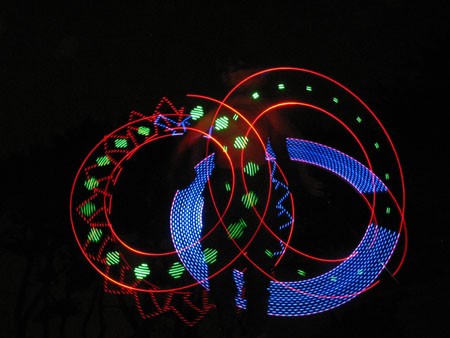
Even if you’ve never attended a rave, you have probably seen one portrayed on film or television. Those glowing spheres-on-a-string being swung around are called poi, and [Matt Keeter] has designed a pair with an accelerometer upgrade. Poi have a long history and were originally made from plants, but contemporary examples usually feature some kind of light, whether it’s fire, LEDs, or even glowsticks tied to shoelaces.
This build required double-sided PCBs and [Matt] had to custom make the protective covering that slips over the board. The poi are powered by 2 AA batteries fed into a 5V boost regulator. But wait, no microcontroller and no PWM? Actually, we think it’s quite clever that [Matt] took the output from the accelerometer and fed into an inverting amplifier. This keeps the voltage constant while allowing the accelerometer to vary the current. Had he used PWM, the fast motion of the swinging poi would instead produce a blinking effect.
An additional trimmer potentiometer accounts for variability in the accelerometers’ output by adjusting the default brightness. If the recent recap of Burning Man has you excitedly planning to attend next summer, you’d probably find plenty of opportunities to use these in the desert.










